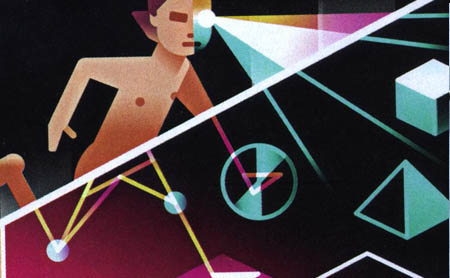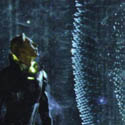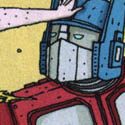How the 80's Saved Sci-Fi
By Paolo Bacigalupi | June 20, 2012 | 6:30 am

Science fiction was stuck in a complacent groove by the 1980s. You could go into a bookstore and find Arthur C. Clarke’s next Odyssey installment or Isaac Asimov’s books about the three laws of robotics. Robert Heinlein was still churning out sex and philosophy.
But despite the efforts of a variety of literary insurgencies, science fiction felt very much like it did 20 or 30 years before. It was a La-Z-Boy-recliner experience of the future. Competent men of science did competent things, aerospace was the coolest tech, and politics revolved around the conflicts of nation states.
And then came cyberpunk—Pat Cadigan, William Gibson, Bruce Sterling. It was subversive and gritty, a poetry-kaleidoscope trip into the for-profit future. Faceless corporations loomed over the ant-sized dramas of human endeavors, moving billions of dollars and yen around the globe while the human beings of the story scrapped it out on the streets.
It was cyberspace and console cowboys, leather jackets, Zeiss eye implants, modded Russian knockoff prostheses, extinct horses, mirrorshades. The future was bizarre and threatening—and also strangely real.
For me as a kid, reading cyberpunk was like seeing the world for the first time. Gibson’s Neuromancer wasn’t just stylistically stunning; it felt like the template for a future that we were actively building. I remember reading Sterling’s Islands in the Net and suddenly understanding the disruptive potential of technology once it got out into the street.
Cyberpunk felt urgent. It wasn’t the future 15 minutes out—it was the future sideswiping you and leaving you in a full-body cast as it passed by.
It was a desperately needed course correction. Science fiction had lost the thread of reality. Human beings weren’t going to the moon; we were going digital. Someone needed to grab the genre by the lapels and yank it around—force writers to look at the present moment and decipher its implications.
The thing is, we’re starting to hit another course correction. It’s time again for science fiction to reassess its most beloved meta-narratives. To the extent that my novel The Windup Girl was a success, I think it was because I touched on issues that people are desperately interested in but that science fiction had been ignoring. If a book about agribusiness takes off, you know something’s amiss in the universe.
I work in a literary genre that thrives at uncertainty points, when questions about our future are unanswered. Even though post-9/11 America is as corporate-dominated as any cyberpunk could have anticipated, it’s also national-security-obsessed. We seem to be building toward a sort of public-private partnership of free-market totalitarianism that never felt like it was on the road map.
And of course, the huge question mark is global warming. There are so many variables, from sea level rise to disrupted ecosystems to catastrophic droughts, that a bunch of our comfortable narratives about what the world will look like—let alone how we’ll adapt to it—are in play. Just as when we were on the cusp of cyberpunk and didn’t know it, I’m hoping now for another new breed of writers, people who can craft drive-by speculations that leave us gasping with surprise. Those kinds of writers don’t just see the future; they see the present.









